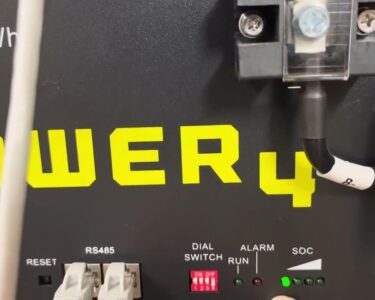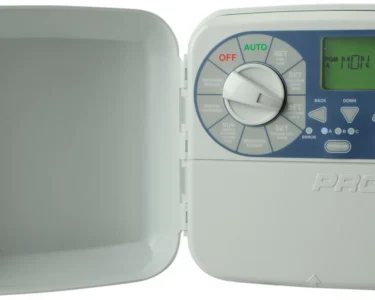Does your pool area suffer from dim or malfunctioning lighting, disrupting both safety and ambiance? Proper pool lighting does more than illuminate your swimming space; it enhances the aesthetic appeal and ensures the safety of users during nighttime activities. In this troubleshooting manual, we’ll delve into common pool lighting issues and provide effective solutions to keep your pool beautifully lit and hazard-free. Continue reading to learn about the most frequent problems and the steps you can take to resolve them efficiently.

Table of Contents
1. Common Pool Lighting Problems
Flickering Lights
Flickering lights can be a common nuisance in pool lighting systems. The issue may arise from loose connections in the wiring or faulty bulbs that need replacement. Regularly inspecting these components can often resolve flickering issues and ensure consistent illumination.
Lights Not Turning On
When pool lights fail to turn on, the problem may lie in the power supply. Check for potential power issues such as blown fuses, faulty switches, or tripped breakers. Ensuring that these components are functioning correctly can help in identifying and fixing the root cause of the problem.
Preliminary Checks and Safety Precautions
Turn Off Power
It’s crucial to prioritize safety before initiating any troubleshooting tasks. Ensure all electrical connections are disconnected by turning off the power at the circuit breaker.
Inspection of Equipment
Before delving into specific issues, perform a thorough inspection of your pool lighting equipment. Check the condition of lights, transformers, and junction boxes for any visible signs of damage or wear.
3. Diagnosing Electrical Issues
Check Power Supply
Verify that the pool light circuit is receiving power. Begin by inspecting the circuit breaker to ensure it has not tripped. If the breaker has tripped, reset it and check if the lights turn on. If it continues to trip, there may be a more significant electrical issue that needs addressing.
Test Ground Fault Circuit Interrupter (GFCI)
Ensure the GFCI hasn’t tripped. GFCIs are crucial for pool lighting safety, preventing electrical shock by shutting off power if they detect ground faults. If the GFCI has tripped, reset it and see if the pool lights operate normally. If it trips again immediately, the issue may be with the wiring or the light fixture itself.
Multimeter Usage
Instructions on using a multimeter to check voltage at various points. First, set your multimeter to the appropriate voltage setting. Check the voltage at the main power supply to the pool light circuit. Then, proceed to check the voltage at the transformer and at the light fixture itself. If there is no voltage at any point, it may indicate a break in the circuit or a faulty transformer. If you detect voltage at the supply but not at the fixture, the issue might be with the wiring or connections.
4. Addressing Specific Lighting Problems
Replacing Bulbs
To replace pool light bulbs safely:
- Turn off all power to the pool lights.
- Remove the fixture from its niche.
- Open the fixture and replace the old bulb with a new one.
- Ensure the new bulb is seated correctly and reassemble the fixture.
- Place the fixture back in its niche and restore power, checking for proper function.
Fixing Loose Connections
To identify and secure loose wires:
- Turn off the power to the pool lighting system.
- Open the junction box and check for any loose connections.
- Tighten any loose screws or other fasteners holding the wires in place.
- If the wires are damaged, cut and strip the insulation to re-terminate them securely.
- Close the junction box and restore power, ensuring the lights work properly.
Addressing Water Leaks in Light Fixtures
To detect and repair leaks:
- Turn off power and remove the light fixture from the pool.
- Inspect the fixture for any cracks or damage where water could enter.
- Replace any worn-out gaskets or seals.
- Apply silicone to the edges if necessary to enhance the seal.
- Reassemble the fixture, replace it in the niche, and restore power to check for leaks and proper function.
5. Understanding Pool Light Control Systems
Manual vs. Automated Controls
Manual controls require physical switches and can be less complicated to troubleshoot. Issues often involve faulty switches or wiring problems. Automated controls, such as smart systems, offer more convenience but can be more challenging to diagnose. Common problems include software glitches or network issues. Make sure you understand the type of control system in place before attempting any fixes.
Software and Firmware Updates
For automated pool lighting systems, keeping software and firmware up-to-date is crucial. Check the manufacturer’s website for the latest updates. Follow the instructions provided to download and install updates. Keeping your system updated can resolve many common issues and improve overall performance.
6. Maintaining Pool Lighting
Routine Checks
Regularly inspect your pool lights to ensure they are functioning correctly. This can help you spot potential problems early and avoid expensive repairs. Check for signs of wear and tear, and ensure that the lights are securely fastened.
Cleaning Fixtures
To maintain the brightness and efficiency of your pool lights, clean the fixtures regularly. Use a soft brush and a gentle cleaning solution to remove debris and buildup. Avoid harsh chemicals that could damage the fixtures.
Replacing or Upgrading Equipment
Over time, pool lighting components may degrade. Replace old bulbs and fixtures with energy-efficient LED options. If your lighting system is outdated, consider upgrading to a modern, automated control system for better performance and convenience.
7. Professional Help
When to Call an Electrician
- Persistent Electrical Issues: If troubleshooting doesn’t resolve problems, it may be best to involve a professional.
- Complex Diagnoses: Signs like repeated tripping of breakers or GFCIs, significant corrosion, or unexplained outages.
- Safety Concerns: Any situation where handling the issue might pose a safety hazard to yourself or others.
Choosing a Qualified Technician
- Check Credentials: Ensure the technician is licensed and certified in pool lighting and electrical work.
- Look for Experience: Choose someone with a proven track record in troubleshooting and repairing pool lighting systems.
- Read Reviews and Ask for References: Look for technicians with positive reviews and ask for references to verify their reliability and expertise.
- Get Multiple Quotes: Compare quotes from different professionals to find a balance between cost and quality.
Conclusion
In this “Pal Pool Lighting Troubleshooting Manual,” we have explored a comprehensive guide to addressing common pool lighting issues, from flickering lights to lights not turning on. By following the preliminary checks and safety precautions, diagnosing electrical issues, and specifically addressing problems like replacing bulbs, fixing loose connections, and repairing water leaks in fixtures, you can maintain effective pool lighting. We’ve also covered the importance of understanding your pool light control systems, performing routine maintenance, and knowing when to call a professional. Regular maintenance and professional inspections are critical for ensuring the long-term performance and safety of your pool lighting system. Feel free to leave any questions or comments about your pool lighting concerns below, and check out our related articles for more helpful tips. For the latest updates, consider subscribing to our newsletter. We hope this manual has been beneficial, and we look forward to hearing your feedback!



